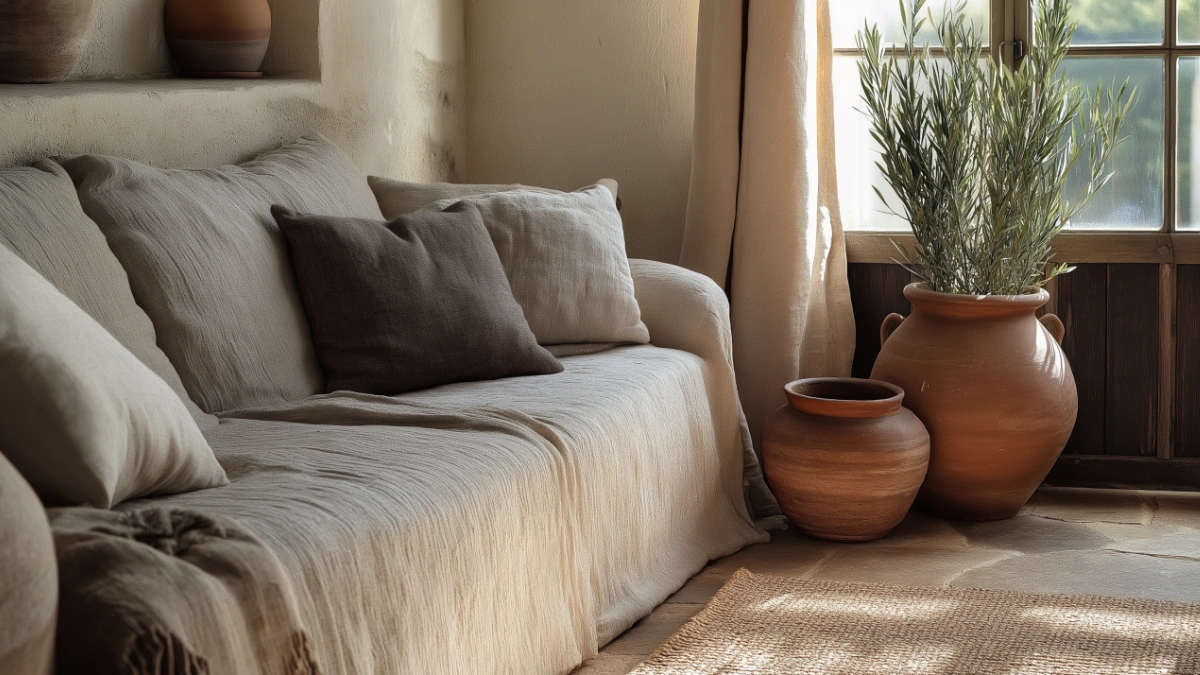Neutral & Earthy Living Room Ideas for a Calm, Serene Space
Table of Contents
Did you know that earthy tones can naturally lower stress levels and improve your mood? In today’s fast-paced world, more homeowners are seeking comfort and tranquility within their living spaces—and the neutral and earthy living room aesthetic delivers just that. By combining soft tones, organic textures, and nature-inspired elements, this design trend transforms any room into a calm retreat.
This guide explores how to style your living room with grounded palettes, timeless textures, and thoughtful layouts. Whether you’re starting fresh or simply refreshing your space, you’ll find actionable ideas, comparison tables, and expert insights to bring your serene vision to life.
1. Why Choose a Neutral & Earthy Aesthetic?
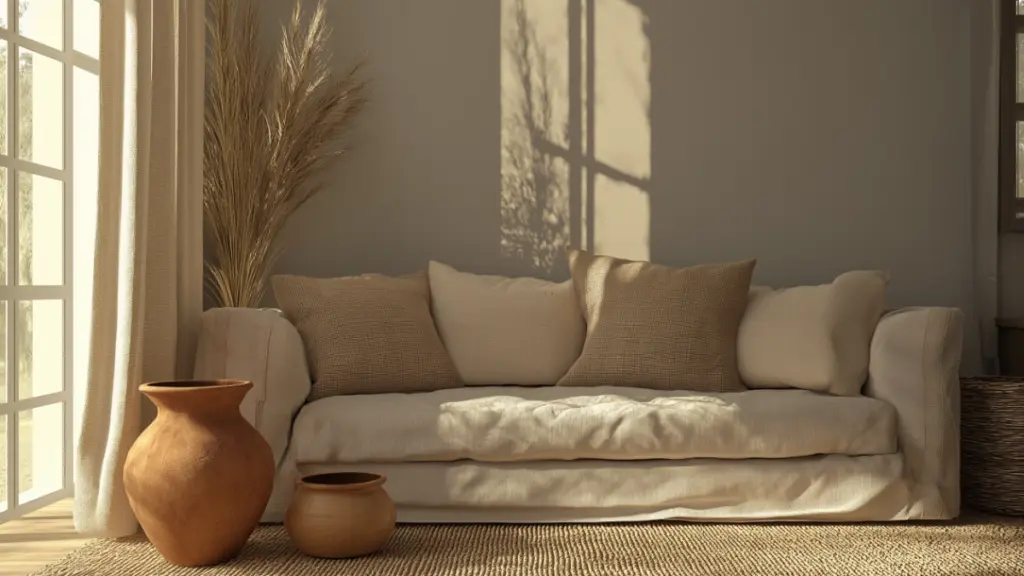
The Psychology of Earth Tones
- Earth tones evoke calm, stability, and balance.
- Neutrals like beige, taupe, and ivory foster clarity and openness.
- Warm hues like terracotta and clay add comfort and grounding energy.
Trending Yet Timeless
- Unlike bolder color schemes, earthy palettes age gracefully.
- Minimalist yet cozy: the look suits a range of design styles (boho, Japandi, farmhouse).
- Popular on Pinterest and in interior design magazines for good reason.
Complementary Styles
- Integrates well with wood, natural fiber rugs, and linen curtains.
- Easy to accessorize with greenery and artisan-made items.
2. Building a Balanced Color Palette

Neutral Base Colors
- Ivory, cream, sand, taupe—perfect for walls and large furniture pieces.
- These shades reflect light, making the room feel airy and expansive.
Earthy Accent Tones
- Olive green, rust, sienna, clay.
- Ideal for pillows, throws, pottery, or artwork.
Color Pairing Table
| Neutral Base | Earthy Accent | Suggested Combo Use |
|---|---|---|
| Cream | Olive Green | Sofa + indoor plants |
| Taupe | Terracotta | Wall paint + ceramic decor |
| Ivory | Rust | Curtains + woven pillow covers |
| Sand | Sienna | Rug + gallery wall frames |
3. Incorporating Natural Textures and Materials
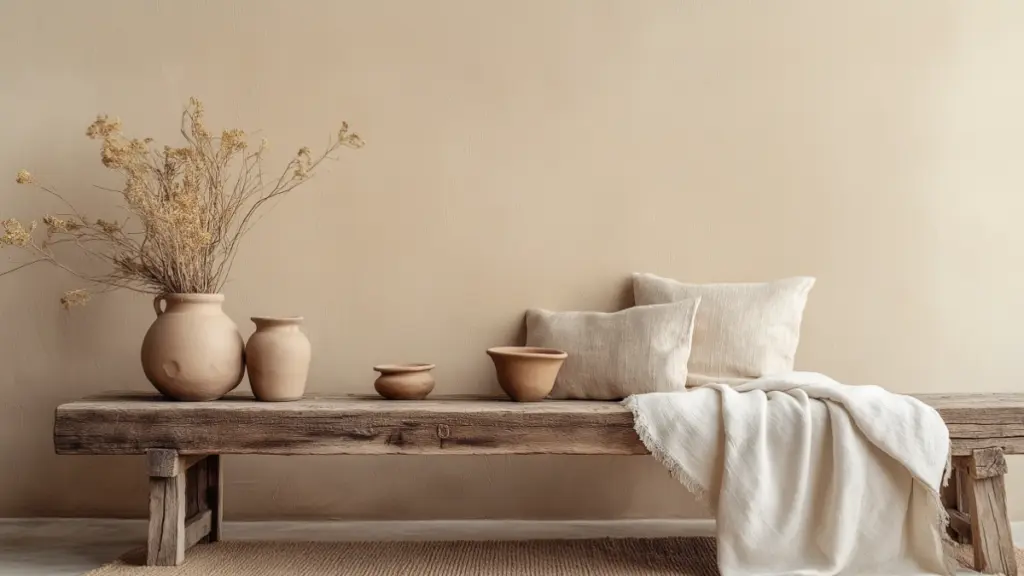
Furniture and Fabric Selection
- Opt for linen, cotton, wool, or boucle upholstery.
- Use reclaimed wood or rattan for tables and shelves.
Organic Accessories
- Handwoven baskets, clay vases, driftwood sculptures.
- Layered jute and wool rugs for depth.
Texture Table
| Material | Texture Benefit | Placement Idea |
|---|---|---|
| Jute | Earthy, grounding feel | Rug under coffee table |
| Linen | Light, breathable look | Throw pillows and curtains |
| Reclaimed Wood | Rustic warmth | Coffee tables, wall shelves |
| Clay | Organic, handmade feel | Planters, bowls, vases |
4. Choosing the Right Lighting for a Serene Ambience
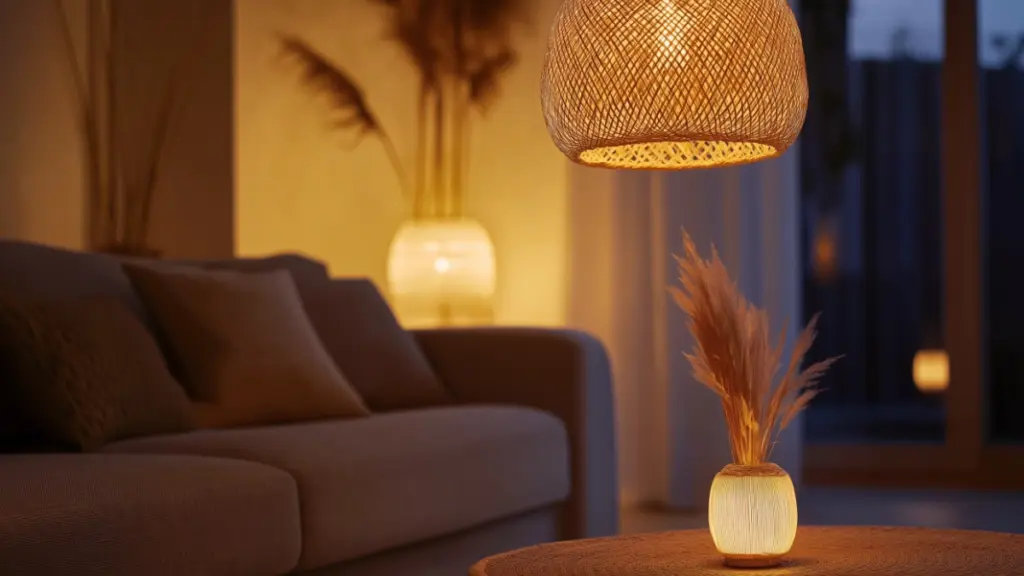
Layered Lighting Strategy
- Ambient: soft overhead or recessed lights.
- Task: warm-toned floor lamps near reading nooks.
- Accent: sconces or candles to highlight artwork and corners.
Fixture Materials
- Choose wood, ceramic, or rattan light fixtures.
- Frosted bulbs soften harsh shadows and add warmth.
Step-by-Step Lighting Setup
| Lighting Type | Example Fixture | Placement Tip |
|---|---|---|
| Ambient | Recessed LED lights | Install dimmable options overhead |
| Task | Adjustable floor lamp | Beside a chair or sofa |
| Accent | Woven pendant light | Hang above coffee table or corner |
5. Furniture Layout for Flow and Function
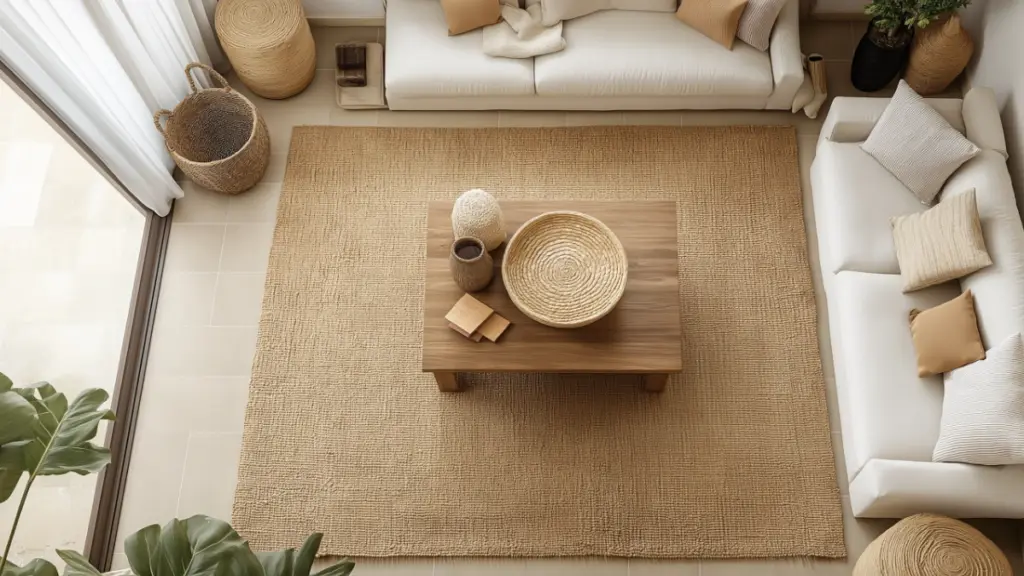
Ground the Room
- Use rugs to define conversation zones.
- Keep a balance between visual weight and openness.
Symmetry & Space
- Float furniture instead of pushing against walls.
- Leave walking space (2.5–3 feet) between items.
Furniture Arrangement Tips
- Anchor the room with a neutral sofa.
- Use a reclaimed wood bench or woven pouf as a coffee table.
- Add a single statement chair in an earthy tone.
6. Decorating with Plants and Botanical Elements
Low-Maintenance Greenery
- Snake plants, olive trees, and pothos thrive indoors.
- Add calming greenery to shelves, corners, and coffee tables.
Decorative Vessels
- Choose ceramic planters in matte finishes.
- Group plants in odd numbers for natural flow.
Best Plants for Earthy Living Rooms
| Plant Name | Light Requirement | Container Idea |
|---|---|---|
| Snake Plant | Low–Medium Light | Tall ceramic pot |
| Olive Tree | Bright, indirect | Woven basket or clay pot |
| ZZ Plant | Low Light | Small stone planter |
| Pothos | Indirect Light | Hanging jute basket |
7. Art, Accents, and Finishing Touches
Wall Art and Framing
- Choose abstract or botanical prints in earthy tones.
- Use wood, black, or brass frames to tie in other elements.
Textiles and Layers
- Throw blankets in soft browns, creams, or burnt orange.
- Layer neutral pillows with varying textures.
Accent Decor Ideas
- Artisan-made ceramic bowls on coffee tables.
- Vintage books and natural wood trays on shelves.
- Dried florals in neutral tones (pampas, eucalyptus).
Detailed Content Expansion
3. Incorporating Natural Textures and Materials
When designing a serene and grounded living room, few elements are more impactful than texture. Earthy aesthetics are defined by tactile richness—linen curtains fluttering in the breeze, the soft roughness of a jute rug underfoot, and the gentle imperfections of handmade ceramics.
Start with upholstery. Linen and cotton are breathable, inviting, and drape naturally. For a touch of plushness, boucle or wool in neutral tones adds warmth without visual clutter. Use these textiles on couches, armchairs, and throw pillows.
Next, consider surfaces and accessories. Reclaimed wood brings natural warmth and a rustic edge. It’s ideal for coffee tables, media consoles, or floating shelves. Complement these pieces with organic accessories: ceramic bowls, handmade mugs, woven baskets, or clay vases. They introduce tactile variation and align perfectly with the grounded aesthetic.
Layer your flooring too. A jute rug makes a wonderful base layer. For colder months or extra coziness, top it with a smaller wool or shag rug in a tonal hue. This layered look adds both comfort and visual interest.
All these materials blend beautifully when their textures contrast slightly—think smooth ceramics against rough baskets or soft throws over coarse wood.
4. Choosing the Right Lighting for a Serene Ambience
Lighting plays a powerful role in setting the tone of your space. For an earthy and neutral living room, you want soft, layered light that mimics nature—think golden hour glow or gentle morning brightness.
Begin with your ambient lighting. Recessed lights or flush mounts work well, but opt for dimmable versions in warm color temperatures (2700K–3000K). This provides flexibility depending on the time of day or mood.
Add task lighting next. Floor lamps with linen or rattan shades create cozy reading zones, especially when placed near armchairs or side tables. Swing-arm sconces or adjustable desk-style lamps also work if you’re short on floor space.
Finish with accent lighting. Woven pendant lights above the coffee table or ceramic lamps on shelves add charm and character. Candles—especially in stone or clay holders—enhance the earthy feel while introducing flickering softness.
Don’t overlook natural light. Keep window treatments light and airy (like gauze or sheer linen) to allow daylight to flow freely.
Conclusion:
A neutral and earthy living room aesthetic is more than a trend—it’s a timeless approach to creating a peaceful, intentional home environment. By embracing calming color palettes, natural textures, and thoughtful lighting, you can transform any living space into a serene sanctuary. Whether you’re starting from scratch or simply updating a few elements, these grounded design choices will help you cultivate a living room that feels as good as it looks.

